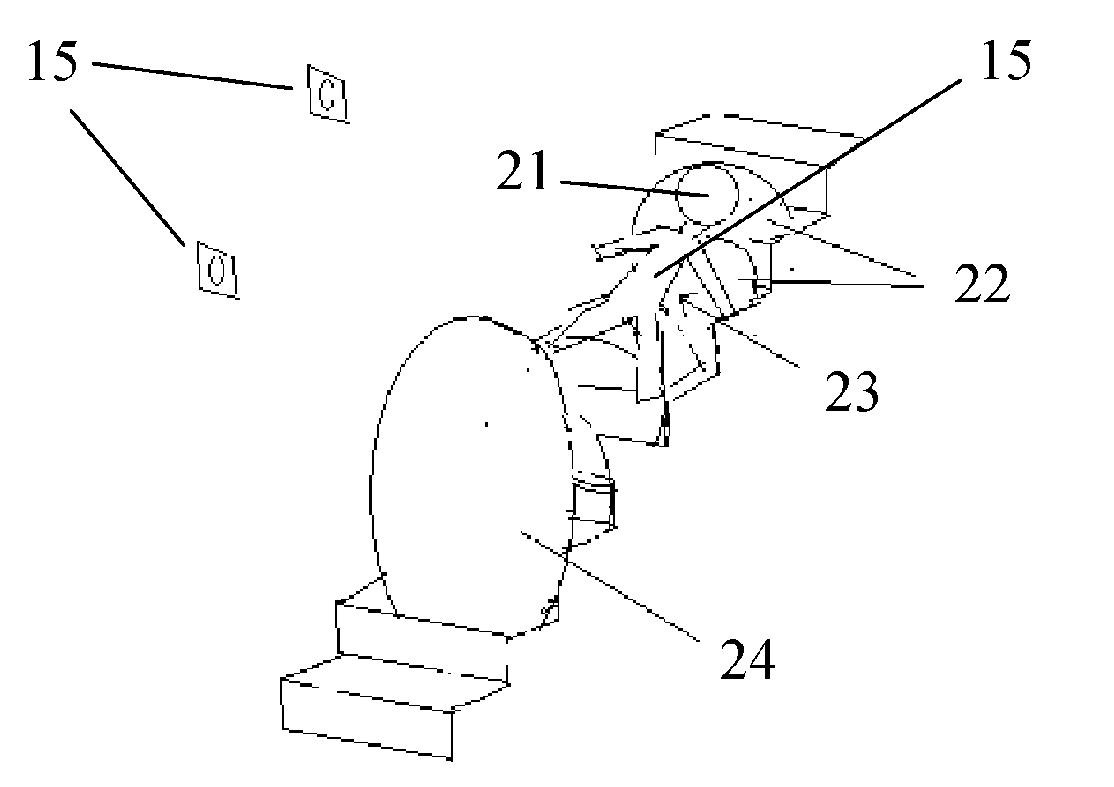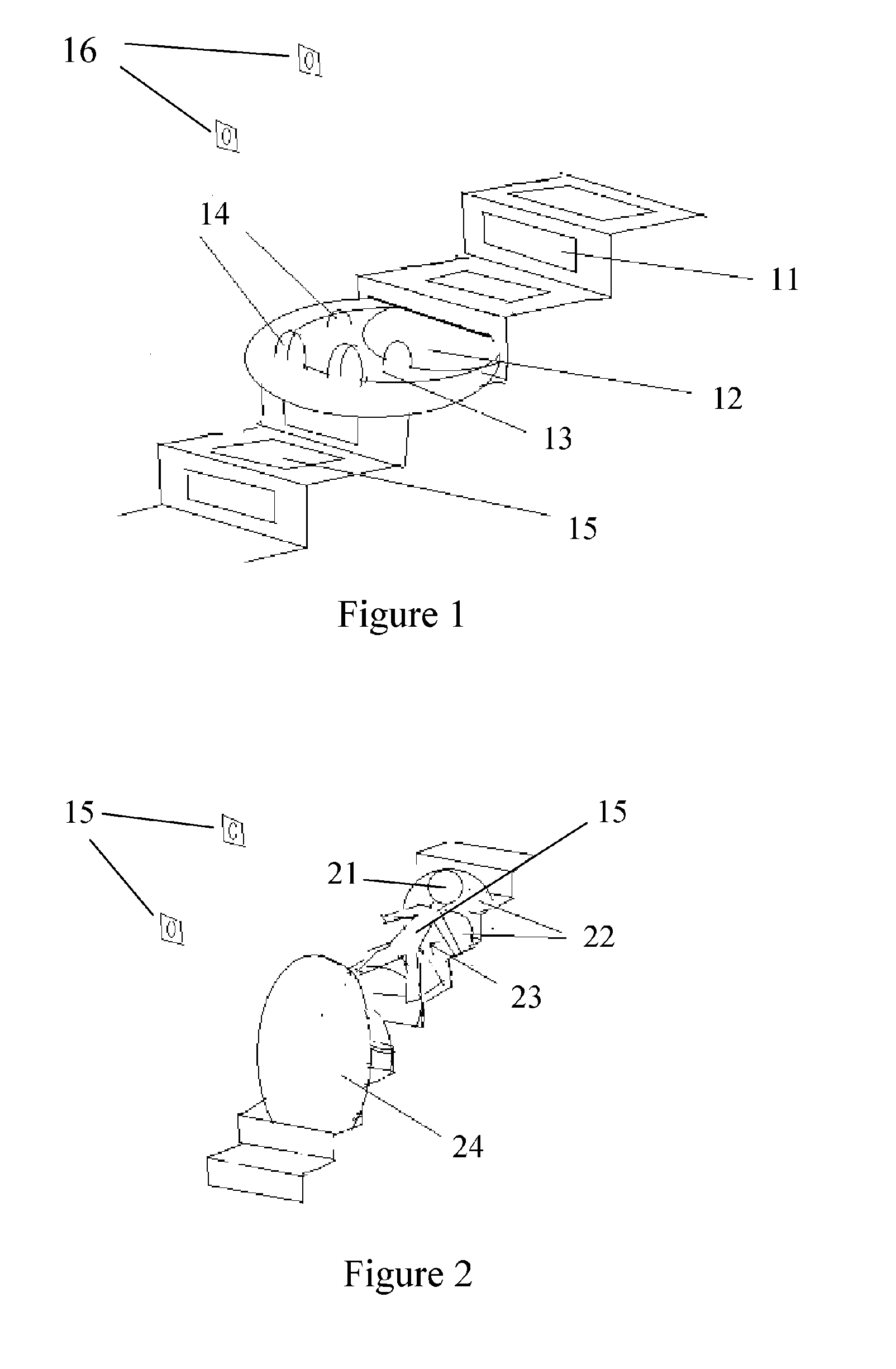Non-Intrusive Fall Protection Device, System and Method
a fall protection and non-intrusive technology, applied in the field of human protection, can solve the problems of substantial medical expenses, loss of independence, and having to move into a nursing home, and achieve the effect of reducing the impact for
- Summary
- Abstract
- Description
- Claims
- Application Information
AI Technical Summary
Benefits of technology
Problems solved by technology
Method used
Image
Examples
Embodiment Construction
[0103] The various embodiments of the invention to be disclosed herein contain two primary interrelated components: 1) a sensor, 2) a computerized device receiving detections from said sensor, for deducing fall conditions from the body of a person to be protected, indicating that said person is beginning to fall, and 3) a cushion which is not carried with the person, but which deploys at an impact location where it is determined an impact from said fall will occur, for reducing said impact, in response to said detecting fall conditions. The link between the sensors and the deployment of cushions, that this, the detecting of fall conditions and deploying appropriate cushions in response, makes use of computer processing and software comprising information classifying body motions into various falling and non-falling categories, and comparing a sensed motion to the classified motions to determine if a fall is taking place. Further embodiments calculate where the point of impact will b...
PUM
| Property | Measurement | Unit |
|---|---|---|
| force | aaaaa | aaaaa |
| movement | aaaaa | aaaaa |
| pressure | aaaaa | aaaaa |
Abstract
Description
Claims
Application Information
 Login to View More
Login to View More - R&D
- Intellectual Property
- Life Sciences
- Materials
- Tech Scout
- Unparalleled Data Quality
- Higher Quality Content
- 60% Fewer Hallucinations
Browse by: Latest US Patents, China's latest patents, Technical Efficacy Thesaurus, Application Domain, Technology Topic, Popular Technical Reports.
© 2025 PatSnap. All rights reserved.Legal|Privacy policy|Modern Slavery Act Transparency Statement|Sitemap|About US| Contact US: help@patsnap.com



